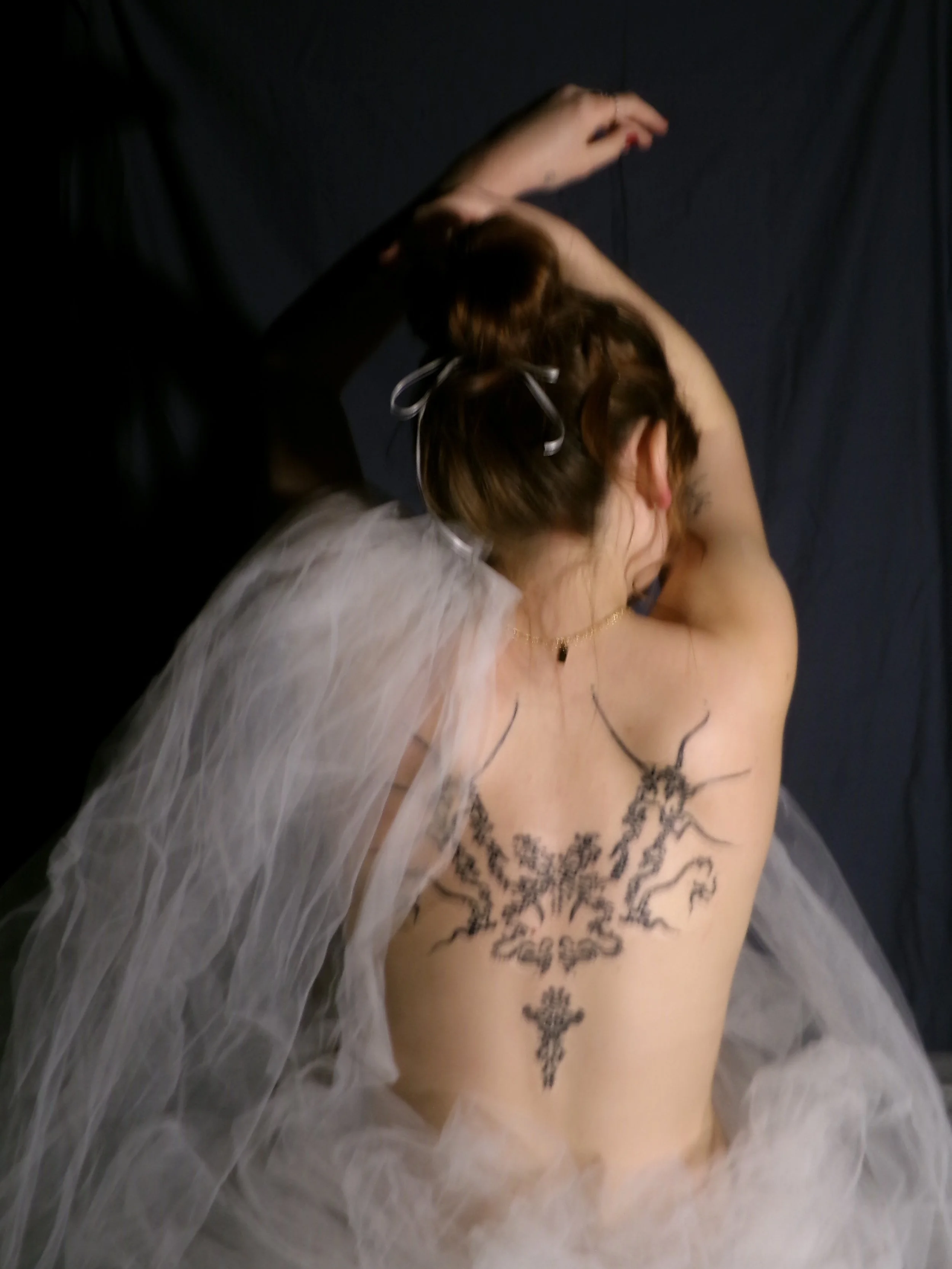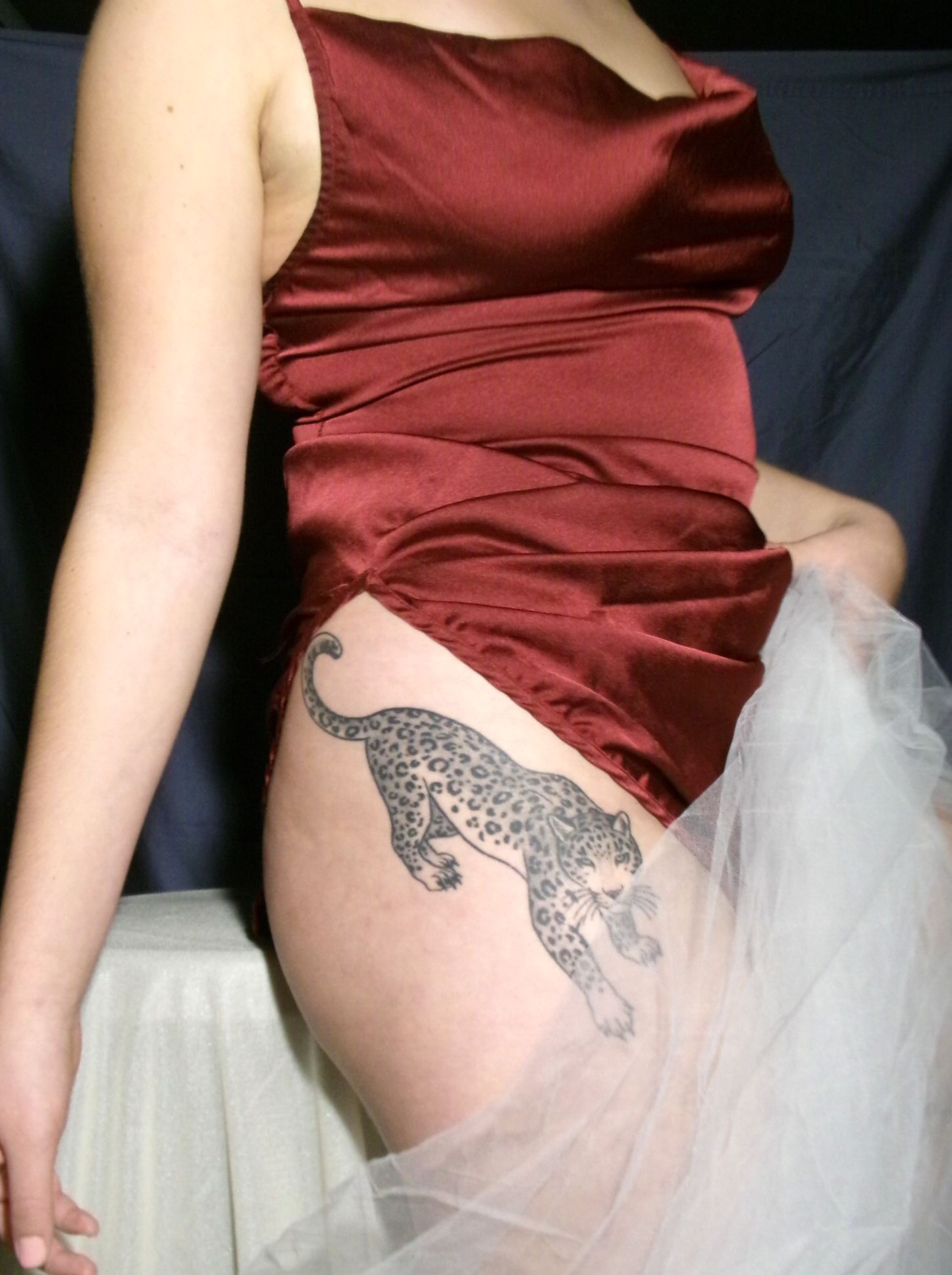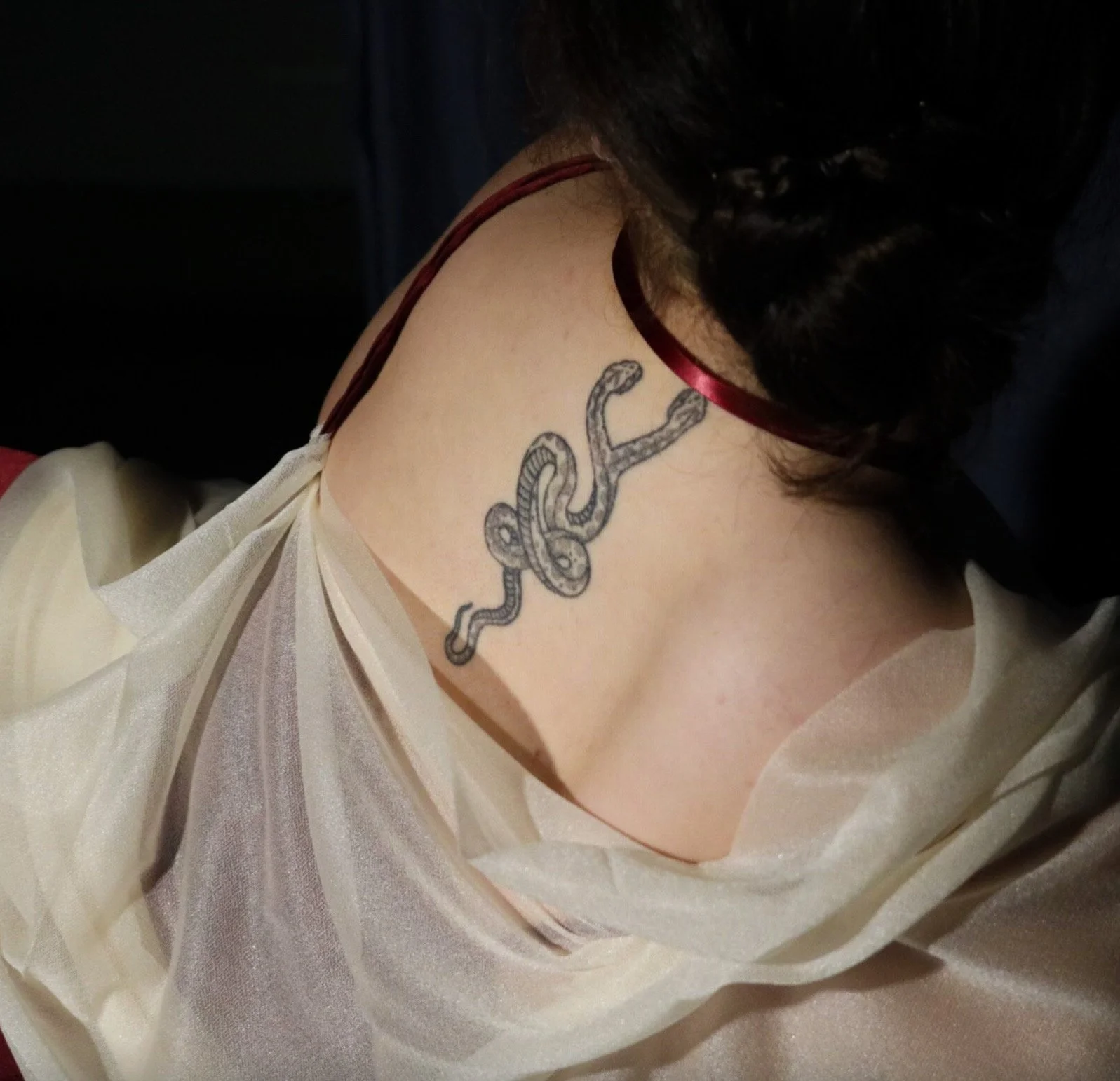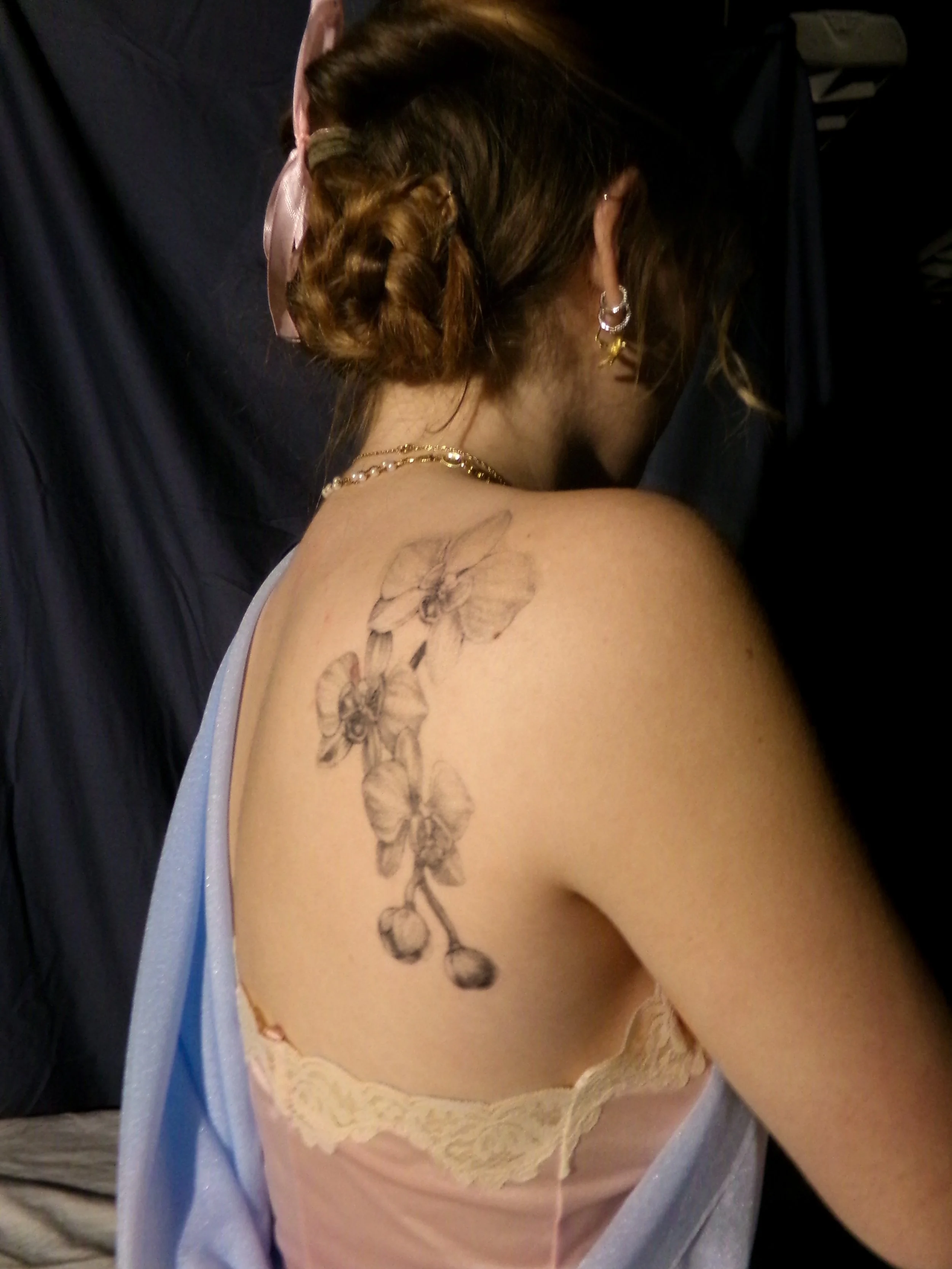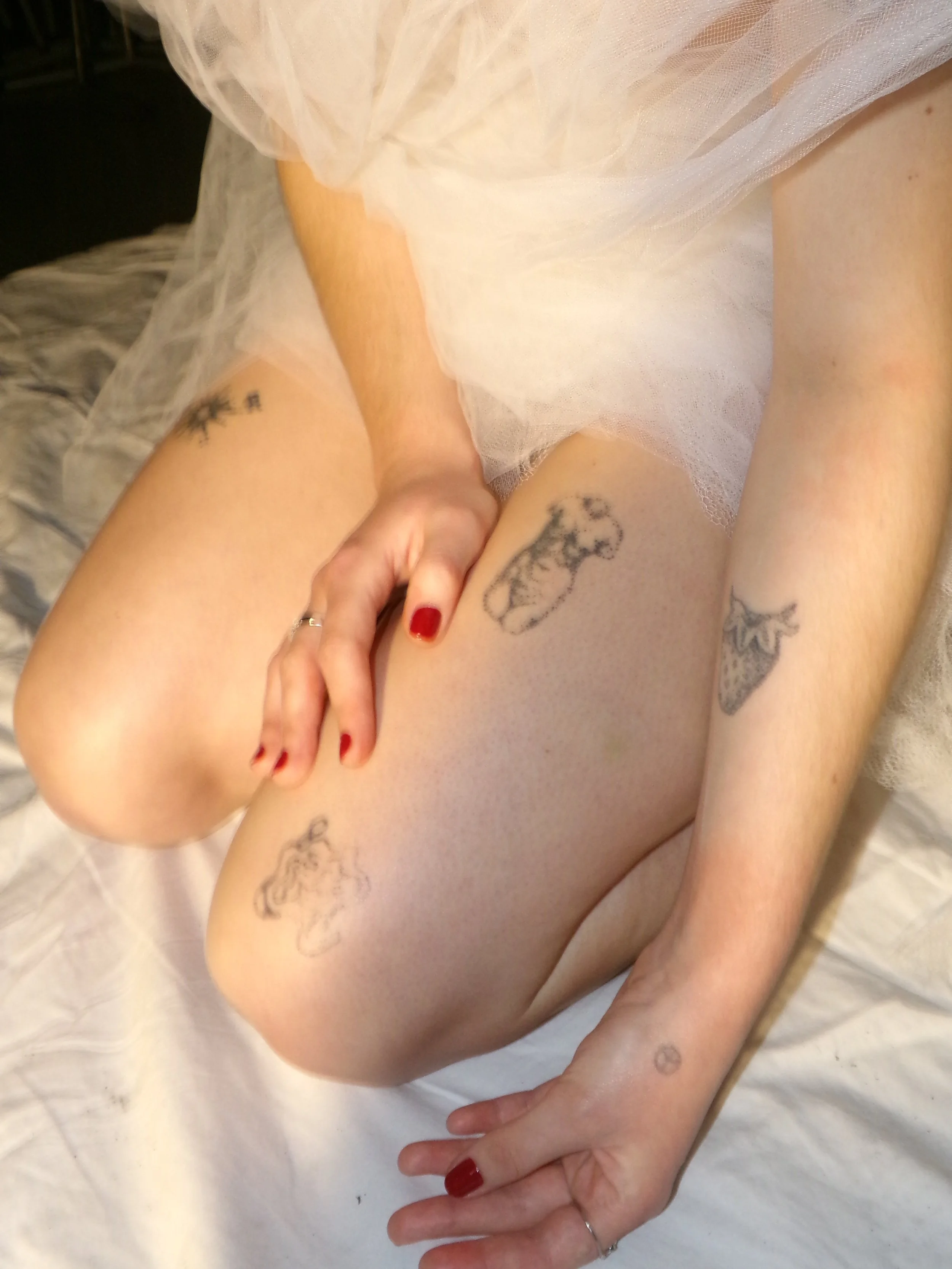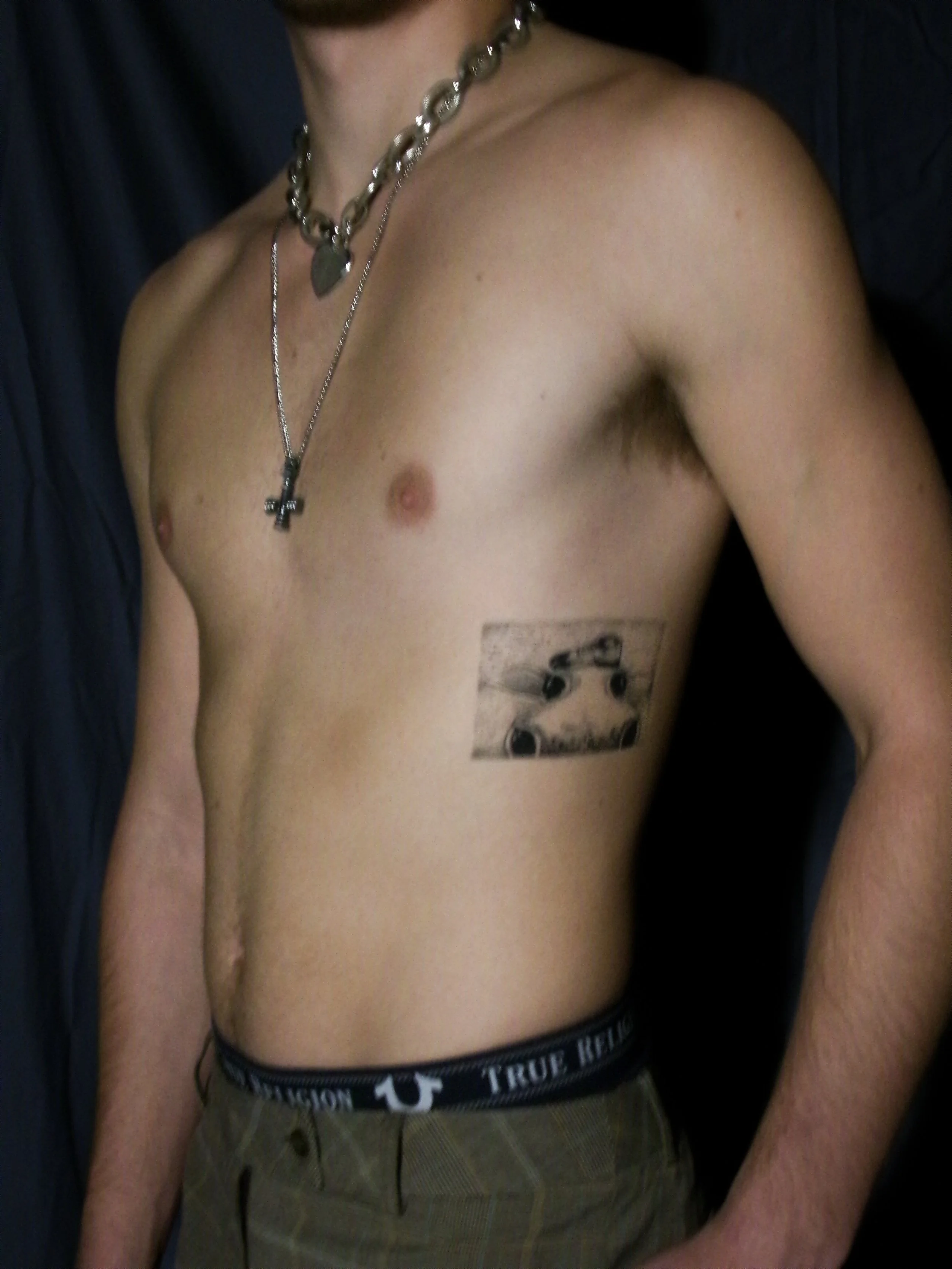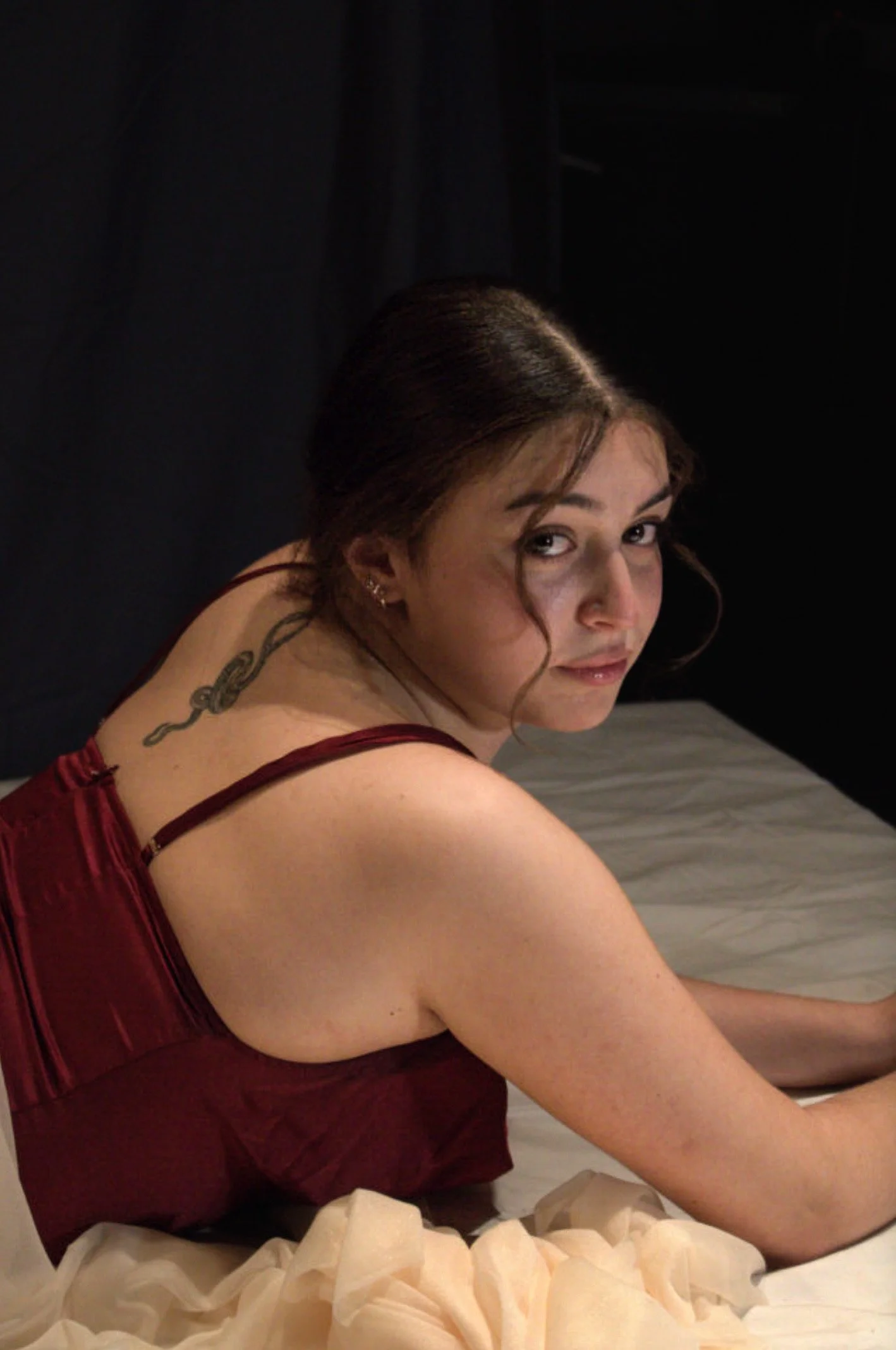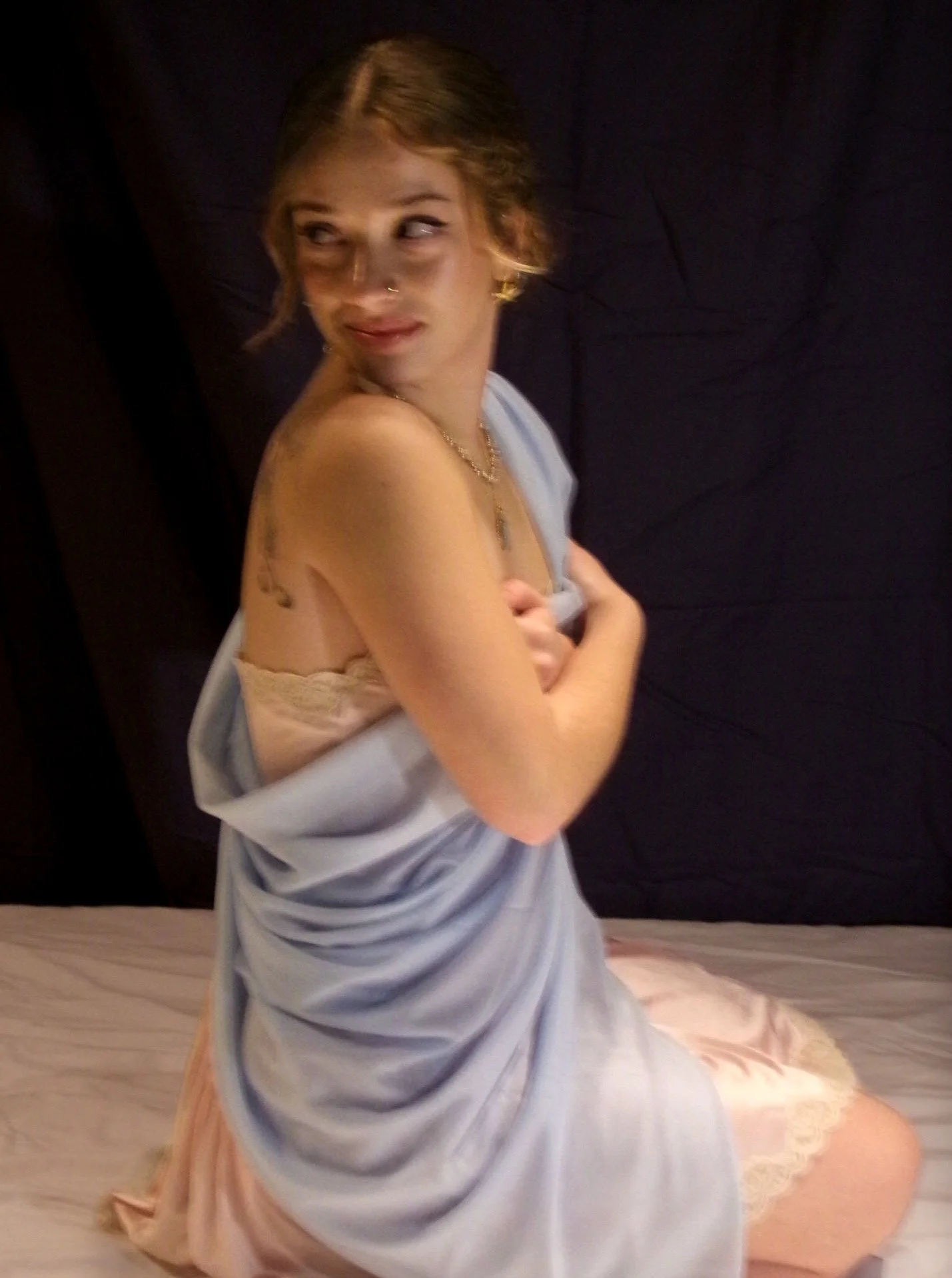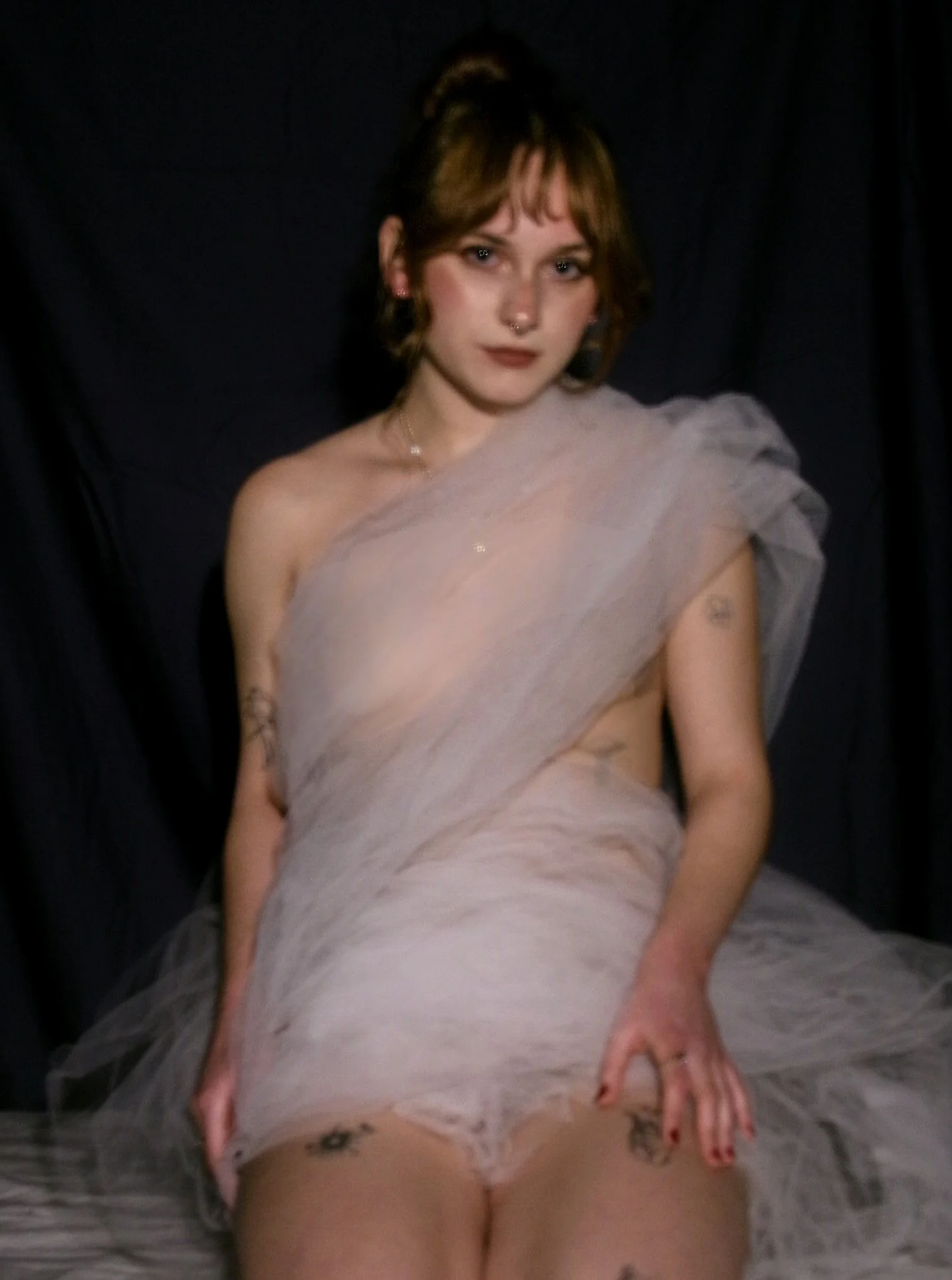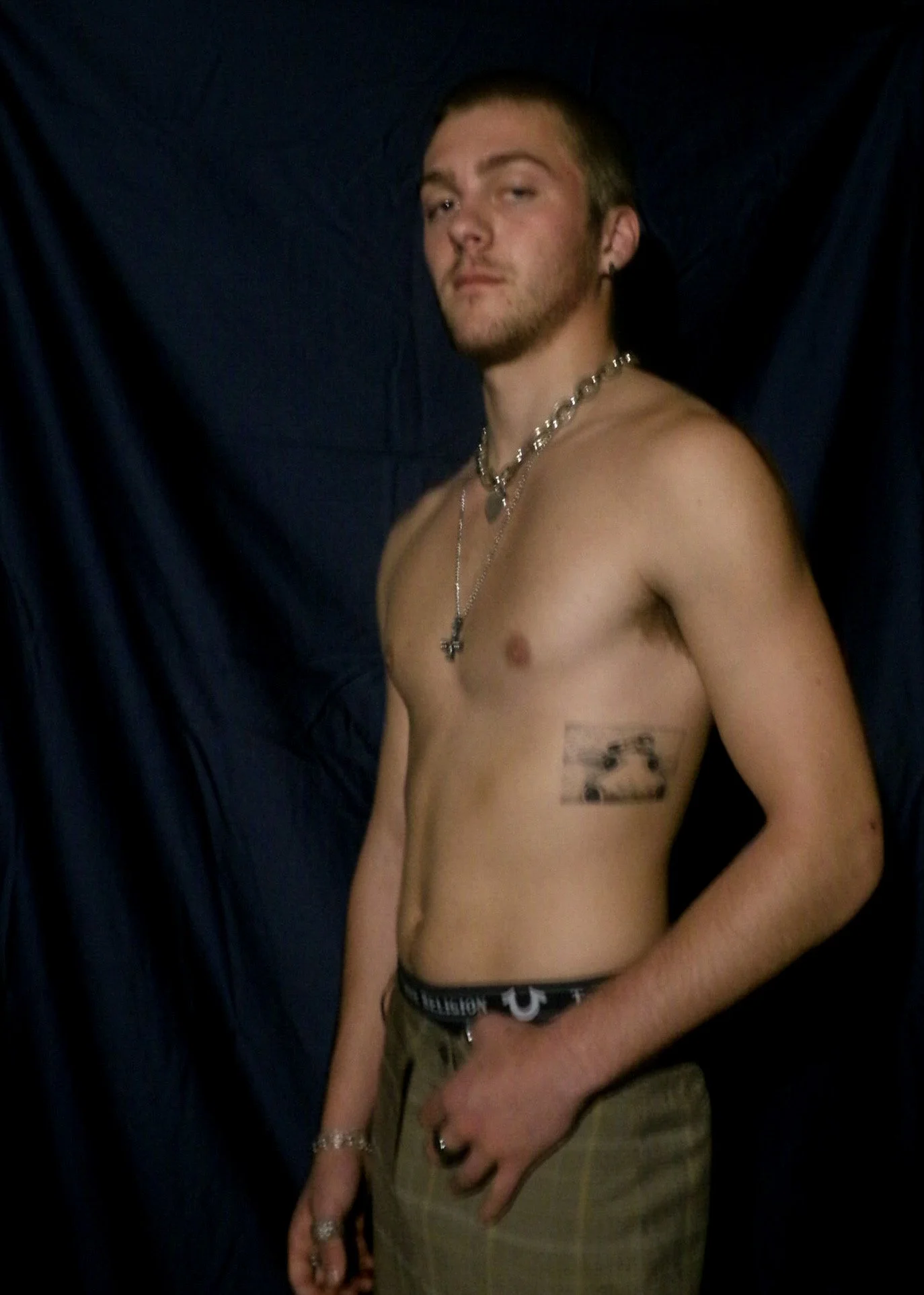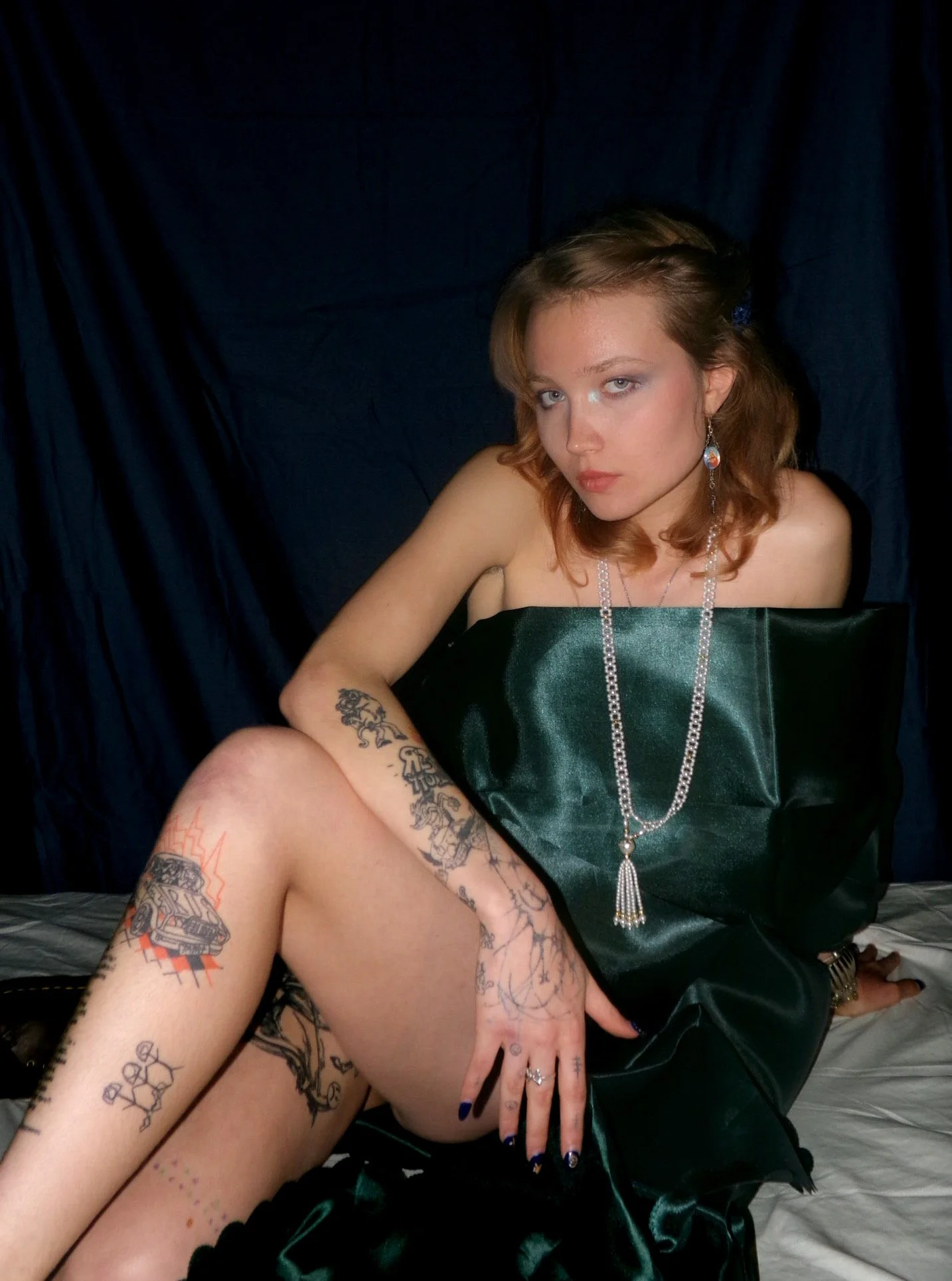The Inked Renaissance
CREATED BY Sydney Fuentez
PHOTOGRAPHED BY Nyah Khan
My favorite art medium is tattoo ink on skin. I believe that all forms of art, no matter what technique or material is used, have something essential to communicate. Tattooing has been practiced since the beginning of civilization and, over thousands of years, has expanded into a worldwide phenomenon. Whether you associate them with an individual’s history, symbols full of meaning, or just for fun, there is no doubt tattoos tell a person’s story. The zeitgeist of our time has subjected tattoo culture to stylistic trends, sparking an inked-up craze among young adults everywhere.
CYBERSIGILISM
Cybersigilism is unmistakable, distinguished by a mix of thin lines, sharp points and angles, and abstract shapes that flow with the body. It is a unique combination of technological circuitry (hence the “cyber” prefix) and organic shapes, often resembling a bug, like a butterfly or a centipede. Cybersigilism is a more futuristic take on tribal tattoos that were popular in the 90s, which had controversy over cultural appropriation of Polynesian cultures. Still, the new style’s roots in heavy metal help it stand out.
““The form of the piece feels like it is growing out of my back, like it was meant to decorate me in some type of way.””
BLACKWORK
True to its name, blackwork pieces are made solely with black ink, making them a compelling style choice among tattoo enthusiasts. Typical options include ornamental or geometric patterns, realistic portraits of people, and stylized animals. This style has ancient Polynesian roots and usually pertains to more extensive and bolder tattoos that take up more space on the body. Although it used to stick to a more tribal look, blackwork expanded beyond that barrier as tattoo artists became more innovative and creative.
“I feel like this style suits my own aesthetic, which is typically simple but intentional. I love the bolder black lines with the delicate stippling as opposed to more traditional gray shading.”
FINE LINE
Fine line tattoos gained popularity in the 90s for their intricacy and crisp look, compared to the usual bold lines seen in traditional American or Japanese styles (think Ed Hardy or the classic “Mom” over a heart). The fine line style is achieved using a thinner needle and has evolved as more precise technology has been produced. The daintiness makes fine-line tattoos popular with women, giving them a more feminine or realistic look. People usually choose this style for smaller, less noticeable tattoos or if they’re looking for a less painful option.
“I wanted the flower to be dainty and realistic.”
STICK-AND-POKE
Done with a single needle, ink, and much patience, stick-and-poke pieces are done by tattooing numerous tiny dots on the skin to create a picture. This method is how ancient Egyptians, Romans, Persians, and Greeks created body art thousands of years before the creation of the tattoo machine. The amount of detail with this style can vary, so virtually anything can be made through the dots’ placement, from shapes with thick borders to wispy, smoke-like graphics. The stick-and-poke method is popular among beginner tattoo artists, and some even combine stick-and-poke with the traditional machine method to enhance their tattoos.
“The tattoo is of a painting [of a cow] in my house, and the stick and poke style would be able to replicate the small paint strokes.”
PATCHWORK
Think of a typical middle school classroom desk decorated with random doodles and sketches. The term “patchwork” refers to having a bunch of smaller tattoos placed close together on the body. Although the tattoos might not look artistically similar, the condensed location makes them look cohesive. The patchwork style originates from sailors who sailed from port to port and would get new tattoos as souvenirs during their travels. Any combination of tattoo designs can appear in a patchwork sleeve; simple blackwork or fine-line tattoos are more common, but some may choose to get Traditional American styles with color and shading. Anything goes!
“I always wanted to do the patchwork style... I just had a plan in mind that I want certain parts of my body covered, and I’ve just been sticking to the plan.”
No two tattoo stories are the same; no matter how tacky, there is an endless range of reasons, meanings, and thoughts attached to each ink masterpiece! Let’s see what our human canvases could attest to regarding their tattoos:
Sylvia:
My snake tattoo was my first tattoo so it is special to me in that regard, but also has a lot of family meaning to me. I’ve always loved snakes, but specifically [my tattoo is of] an Armenian viper. My last name also means “venom” in Italian so I was set on getting this tattoo since I was around 16/17. I also designed it, which makes it even more special. My leopard is a reference to a charm bracelet my mom has, with animals that represent each member of our family. The big cat is my charm, which means “proud of you”. I was obsessed with animals growing up (and still am), so I love that they have played an important role throughout my life and will stay with me through my tattoos... I feel empowered by my tattoos and love the way they fit me both personally and physically on my body.
Nova:
I got the flower for my dad because I always buy him orchids for holidays and special occasions. I got the star done just because I thought it was pretty, and Cailin [Tallerico] actually did it for me! I love tattoos; I feel like it’s art on my body.
Cailin:
My back tat is like an adornment in a way... I forget it’s there sometimes, so when I see it, it feels like showing off my favorite piece of jewelry for the first time again. My other patchwork pieces were mainly stick and pokes I have done on myself. I really appreciate them even if they don’t really fit with what I like today, because I get to look at them and remember why I initially really liked the design and what was going on in my life to influence that... When I get a new tat, I feel like things are a little less static and I get a rush of excitement every time I see it.
Benji:
The tattoo is of a painting in my house, and it reminds me of home. I really like the look of tattoos, and I think decorating your body is a good form of self-expression.
Varvara: I view tattoos on me [like] an art gallery, so I only get them from artists whose styles I really like, and I only get flash pieces [because]… I want their styles to be captured on my body! I’ve wanted [tattoos] since I was 12 years old, and once I turned 18, I got 17 tattoos in one year.”


